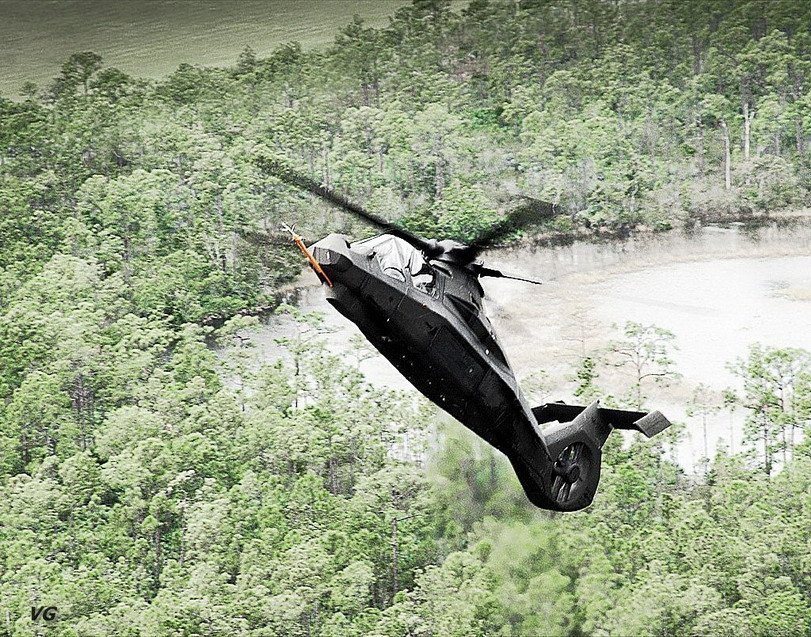
As detection and targeting capabilities have advanced, so have the technologies associated with stealth. Modern stealth designs strive to reduce radar, electromagnetic, infrared, acoustic, and visual detection.

Helicopters feature large rotors that generate a significant radar and acoustic signature. Moreover, their robust engines produce considerable heat, and they operate at slower speeds and with less maneuverability than contemporary fixed-wing aircraft.

It is crucial to recognize that stealth is not a binary concept. Instead, it should be viewed as a spectrum of observability. On one end, there are easily detectable platforms like the B-52 Stratofortress or the F-15 Eagle, while on the other end, there are “low observable” platforms such as the F-117 Nighthawk and F-22 Raptor.

The Boeing-Sikorsky RAH-66 Comanche is widely recognized as the most well-known example of a stealth helicopter.

The United States Army invested a staggering 7 billion dollars into the Comanche program from 1996 to 2004, aiming to develop a mainstream stealth helicopter to replace the OH-58 Kiowa utilized by the Army for scouting purposes.

Given the Kiowa’s role as a scout helicopter, it was logical for the Army to seek a stealth helicopter with minimal detectable features.

Two Comanche helicopters were constructed, boasting a sleek 43-foot fuselage made from composite materials. This fuselage was coated with radar-absorbent material (RAM) and infrared-suppressant paint, ensuring enhanced stealth capabilities.

Additionally, the Comanche featured a five-blade rotor composed entirely of composite materials, resulting in a significantly quieter operation compared to other helicopters. Its appearance resembled a prop from a science-fiction movie directed by James Cameron or Steven Spielberg.

In terms of stealth, the Comanche proved to be highly effective, with a radar cross-section 360 times lower than that of the Apache helicopter.

The Comanche helicopter never went into production. According to Dan Ward’s article in TIME, certain aspects of the Comanche’s technology were considered too risky and underdeveloped. “The design still had serious technical challenges in the areas of “software integration and testing of mission equipment, weight reduction, radar signatures, antenna performance, gun system performance, and aided targeted detection algorithm performance.

Aside from the electronics, the software, the weapons system, the engines, and the overall weight apparently everything else was fine.”

Ward’s criticism is justified: the Comanche project was undeniably one of the most costly failures in U.S. Army history. A staggering $7 billion was allocated for the development of Comanche helicopters, which ultimately never became operational.

The stealth technology used in the Comanche project resurfaced during the iconic military mission of the 21st century: the operation to eliminate Osama bin Laden. UH-60 Black Hawks were modified to incorporate stealth capabilities for this mission.

While specific details regarding the modifications remain limited, former President Barack Obama confirmed in his book, A Promised Land, that the helicopters were indeed equipped with stealth features. Despite encountering a crash landing during the operation, the Navy SEAL team aboard managed to escape with minimal injuries and destroyed the helicopter to safeguard the advanced technology from falling into the wrong hands.

The design of helicopters with 90-degree angles and their operational characteristics make it challenging for them to achieve the same level of low observability as bombers or fighter aircraft.
